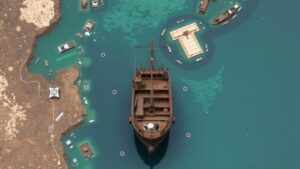Studying Coastal Rock Formations for Fossilized Marine Creatures
Studying Coastal Rock Formations for Fossilized Marine Creatures
Coastal rock formations present a unique and rich repository for the study of fossilized marine organisms. These geological structures not only illustrate the Earths history but also provide invaluable insights into past marine environments and ecosystems. This research article outlines the significance of studying these formations, the methodologies applicable in extracting data, significant case studies, and the broader implications for paleontology and environmental science.
Significance of Coastal Rock Formations
Coastal rock formations, particularly sedimentary types, offer a wealth of information about ancient marine life. e formations, resulting from the deposition of sediments over millions of years, often contain fossils that provide evidence of biodiversity, climate changes, and geological events.
- The stratification of rock layers can indicate historical sea level changes.
- Fossilized creatures serve as bioindicators, helping scientists assess past environmental conditions.
For example, the fossil record found in the Burgess Shale formation in Canada, dated to the Cambrian period (approximately 508 million years ago), showcases a diverse array of marine life, highlighting the evolutionary “explosion†that occurred during this period.
Methodologies for Studying Fossilized Marine Creatures
Research into coastal rock formations typically involves several methodologies to accurately study and understand fossilized marine creatures.
- Fieldwork: Direct examination and collection of fossil specimens from coastal outcrops. This approach often requires geologists and paleontologists to measure stratigraphic sections, document fossil locations, and record environmental contexts.
- Laboratory Analysis: Employing techniques such as radiometric dating to establish the age of formations and fossilized specimens. Microscopy and imaging technologies are crucial for examining fossil morphology.
- Geochemical Analysis: Utilizing stable isotope analysis to infer paleotemperatures and oceanic conditions at the time of deposition.
For example, researchers studying cliffside formations in Dorset, England, have utilized a combination of these methodologies to analyze ammonite fossils, enabling a deeper understanding of the Jurassic seas.
Case Studies: Notable Coastal Rock Formations
Several prominent coastal rock formations stand out as vital areas of study due to their abundance of marine fossils.
- The White Cliffs of Dover, UK: Composed chiefly of chalk, this formation is notable for its expertly preserved microfossils, which date back to the late Cretaceous period. presence of foramina and coccoliths paints a picture of ancient oceanic conditions.
- Coquina Rock, Florida, USA: This sedimentary rock is made almost entirely of shell fragments from mollusks. Studies have revealed insights into the marine biodiversity of the Miocene epoch (approximately 23 to 5 million years ago), showcasing significant changes in climate and sea level.
Implications for Paleontology and Environmental Science
The study of fossilized marine creatures within coastal rock formations extends beyond academic interest; it has practical implications in various fields.
- Paleoclimatology: Understanding past climates informs models predicting future climate scenarios.
- Conservation Biology: Insights into historical biodiversity can guide current conservation efforts, highlighting the resilience and vulnerability of ecosystems.
- Geological Hazards: Knowledge of sedimentary processes helps in assessing coastal area risks, such as erosion and flooding.
The data derived from studying these formations can assist policymakers in making informed decisions about coastal management and conservation efforts.
Conclusion
Coastal rock formations serve as a dynamic canvas for understanding the complex history of marine life on Earth. Through rigorous fieldwork and advanced scientific methodologies, researchers can uncover stories buried within these rocks, offering a glimpse into our planets ecological past. As the impact of climate change continues to reshape our coasts, the need for understanding these geologic, paleontological, and environmental implications has never been more urgent. So, continued investment in both research and the preservation of coastal rock formations is essential for future discoveries.



